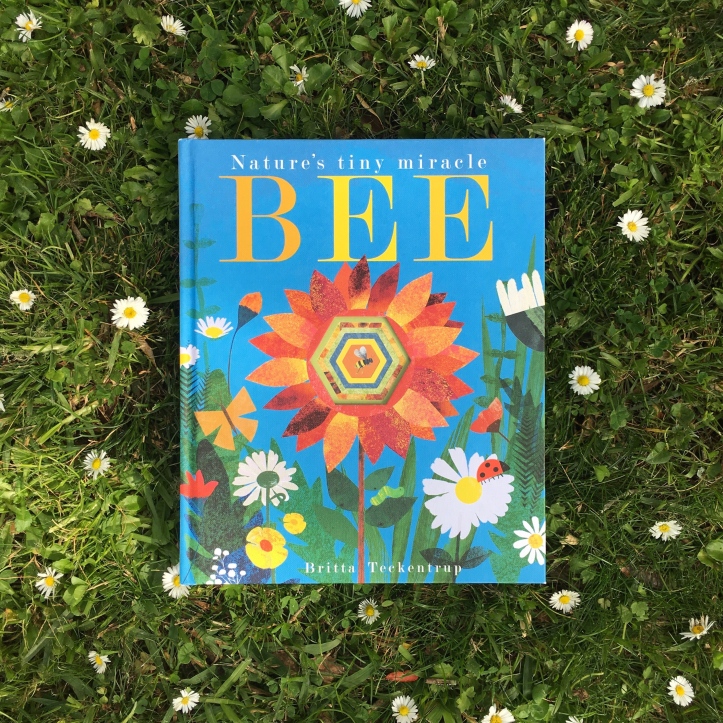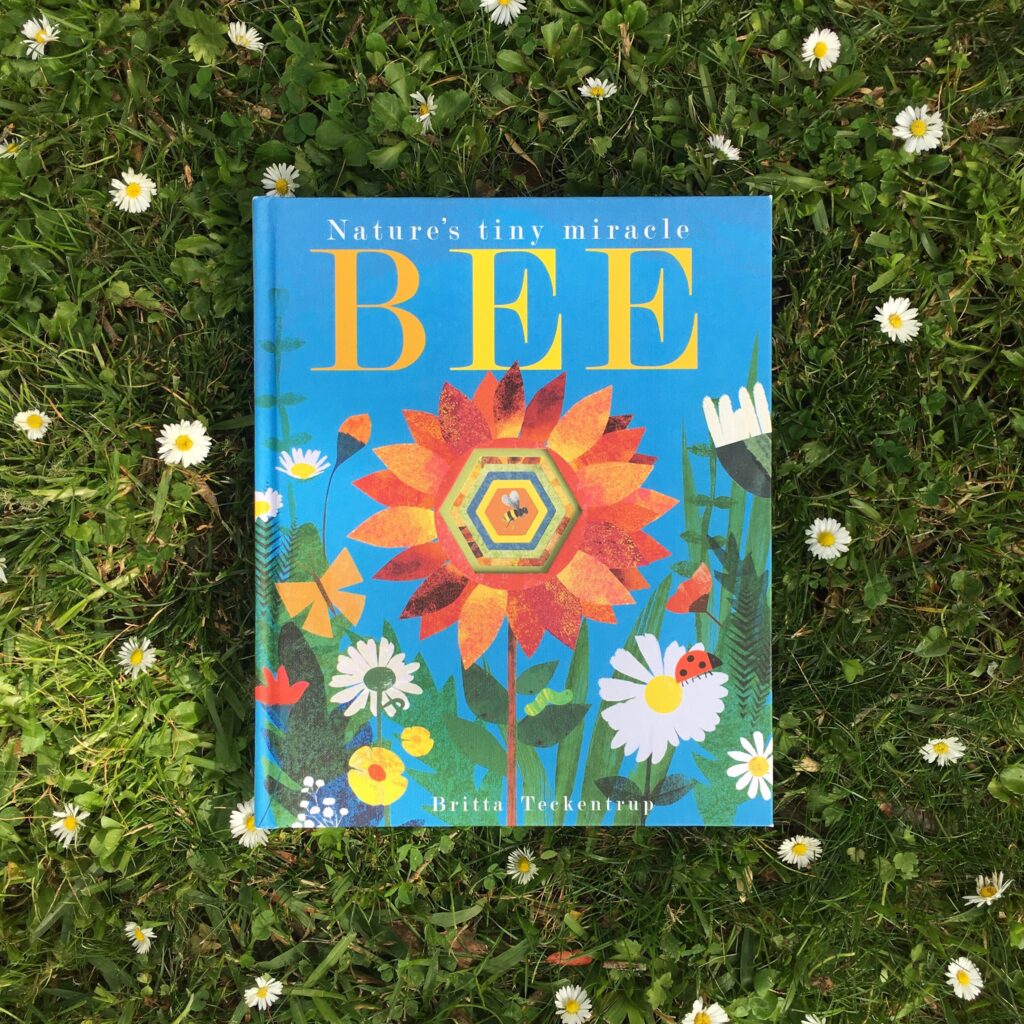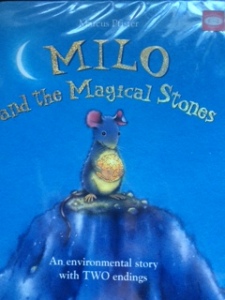What is your definition of community? Do bee’s fall into this category?
Categorise at least 20 different insects into how they help the natural environment.
What came first….the flower or the bee?

Photo courtesy of http://www.readingisourthing.com/portfolio/bee-patricia-hegarty-and-britta-teckentrup/
Bee’s are the forgotten insect that we would be lost without. We love their honey, their pollination skills and their fuzzy little bodies!
Patricia Hegarty writes in rhyme as she introduces the importance of bees in many different environmental settings. These rhymes are brought to life through Britta Teckentrup’s brightly coloured and textured illustrations.
As you travel through the story with the bee, we discover the many different parts to the small environments that bees need to visit as part of their daily life. Children can see how bees work with each other to find the best nectar and can peep through hexagonal cut outs as the bee travels from page to page. There are also hidden animals within each page which allow you to have small conversations with your child about the ecology of each small environment!
So how can we link this story to informing our children about the importance of bees?
Sustainability
- Get your own bee hive! Perhaps this is not possible for everyone due to the environment you live in or the space you have but it is worth looking into. We have our own stingless bee hive as we live in Sydney. It is wonderful to see them buzzing around on days that are over 22 degrees, foraging for food all over our garden. They are small little insects but work so efficiently! The native stingless bees do not provide as much honey as the european bee but in about 6 months we should have some to share! Exciting!
- Which plants rely on bees to be pollinated? Which plants rely on wind?
- Is beekeeping sustainable? Should we be keeping honey bees in Ausrtalia or rely more on the native stingless bee? (The use and management of natural resourcesand waste, and the different views on how to do this sustainably (ACHASSK090))
- Explore the bee populations of the world. Use tables to gather this information. IS there a decline in the bee population? If there is, what is causing this problem? What can we do?
SCIENCE
- Many bees in the wild are being effected by pesticides. Explore the alternatives to using pesticides in your garden.
- Go on an insect hunt. Spend some time outside recording the different types of insects that are alive in a specified area. Create a graph to record the data.
- Which flowers do bees like to gather pollen from? Explore your local area to see which flowers the bees in your area love. Perhaps you can plant some bee attractive flowers?
Mathematics
- Explore the patterns in bee hives! (Link to Geometry/2d and 3d shape in numeracy strand)
- Explore the Fibonacci sequence in flowers and plants. You will be amazed at how mathematical nature is!
Geography
- Research the different species of bees in your country. Where do they live, how far do they forage from there hive?
- Where can honeybees live in your country? Where can native bees live? What sort of temperature, terrain and conditions do they need?
History
- Explore the history of european beekeeping. (The role that a significant individual or group played in shaping a colony (ACHASSK110))
- How was beekeeping influenced the food economy in your country?
Creative arts
- Create your own bee dance.
- Create a poem using the pictures in the story.
- Create your own recipe which requires honey as a key ingredient.
I’d like to thank http://www.readingisourthing.com/portfolio/bee-patricia-hegarty-and-britta-teckentrup/ for sharing this book and image with me! Please visit them on Instagram at @readingisourthing


